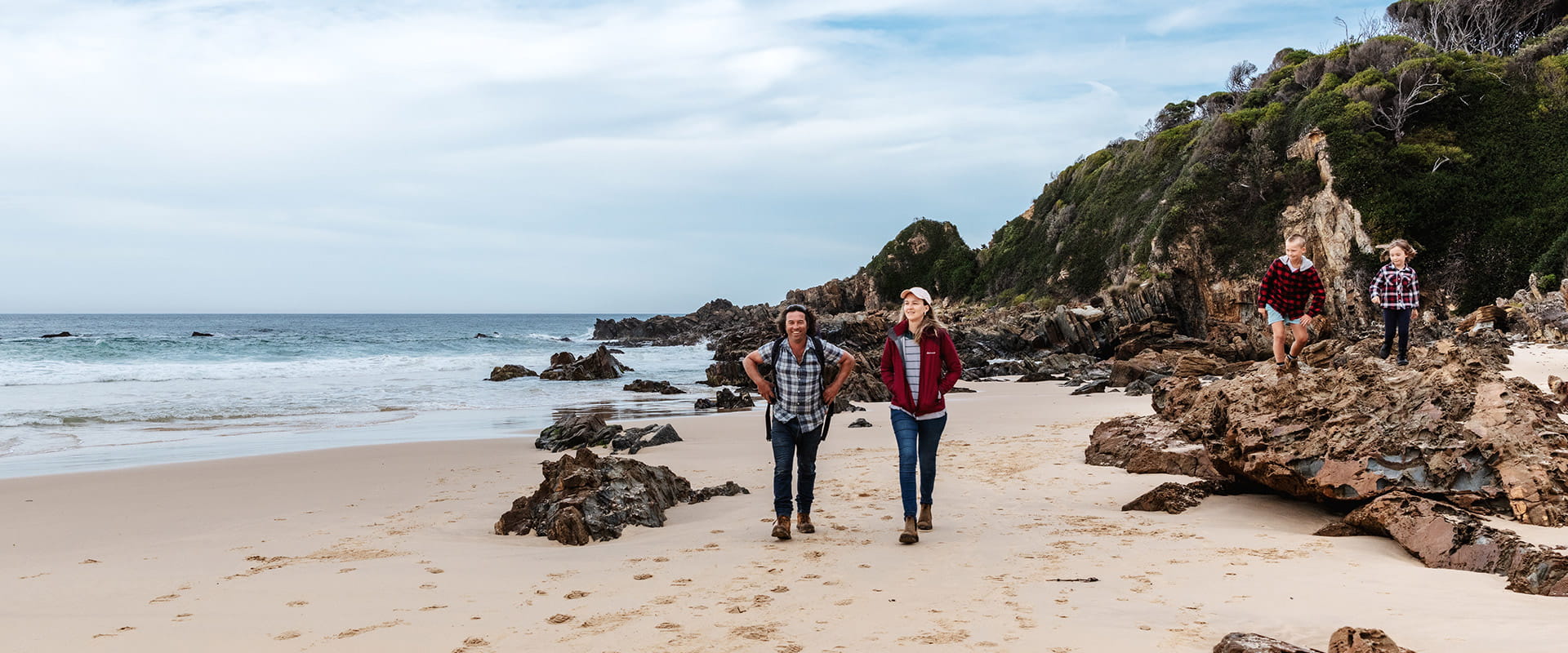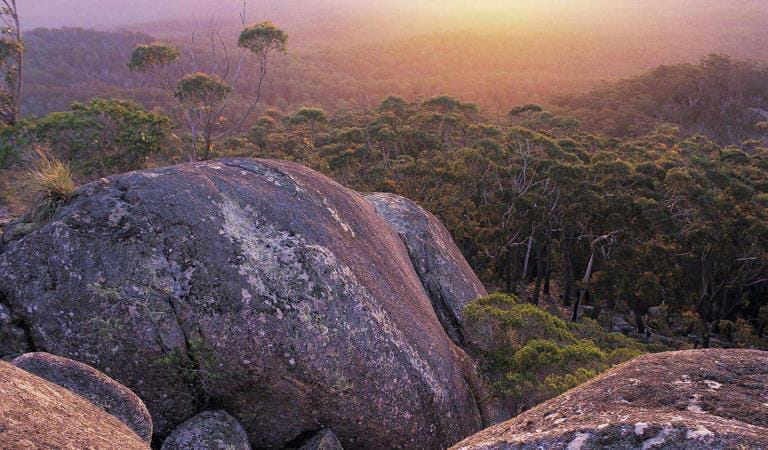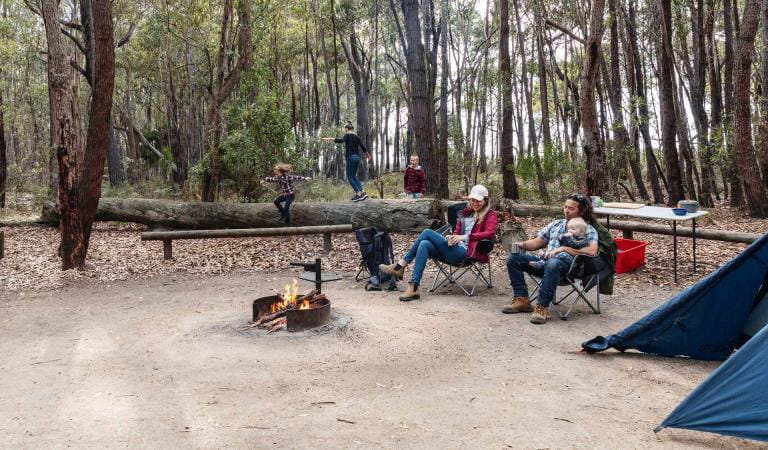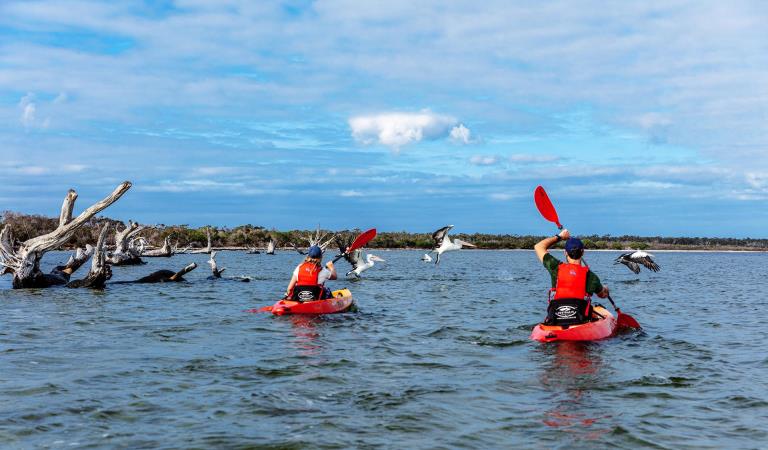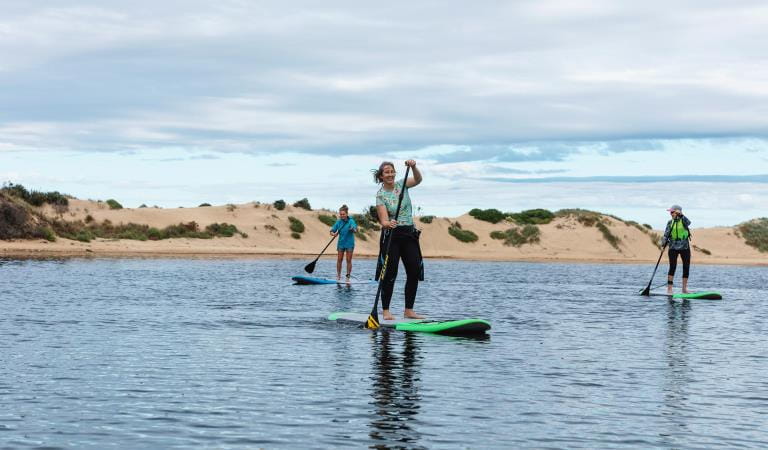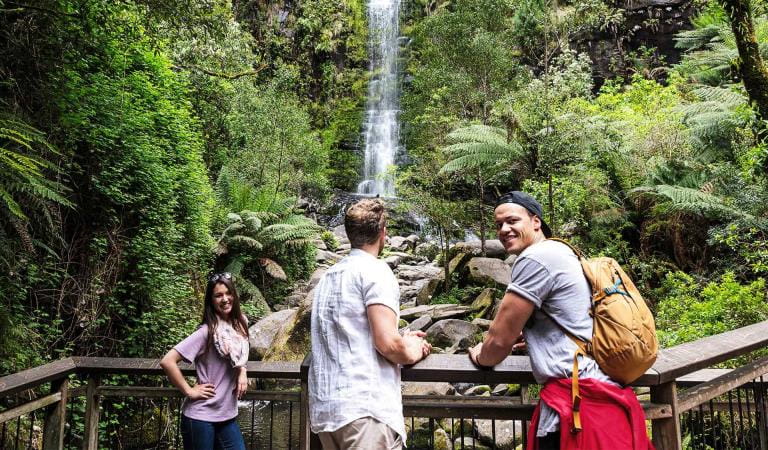Blessed with Victoria's warmest winter temperatures and cool ocean breezes in summer, the coastal township of Mallacoota is one of Victoria’s great escapes. Surrounded by the magnificent wilderness of Croajingolong National Park and coastal headland of Cape Howe, this corner of Victoria is just begging to be explored.
There is no better way to enjoy the charm of Mallacoota Inlet than from the water. Bring your own boat, canoe or kayak, or hire from a local provider. The inlet is the perfect escape for fishing enthusiasts and many competitions are held here year round. Catch bream, mulloway, tailor and flathead and cook them on the BBQ.
If fishing isn’t your forte, pack a picnic and cruise the endless expanses of the Top and Bottom Lakes. Spot pelicans, little terns, herons scouting for their next meal, and if you’re lucky, the White-bellied Sea Eagle. Pull up at one of the ten jetties and picnic areas around the lake for a scenic picnic or bbq or refreshing swim.
Things To Do
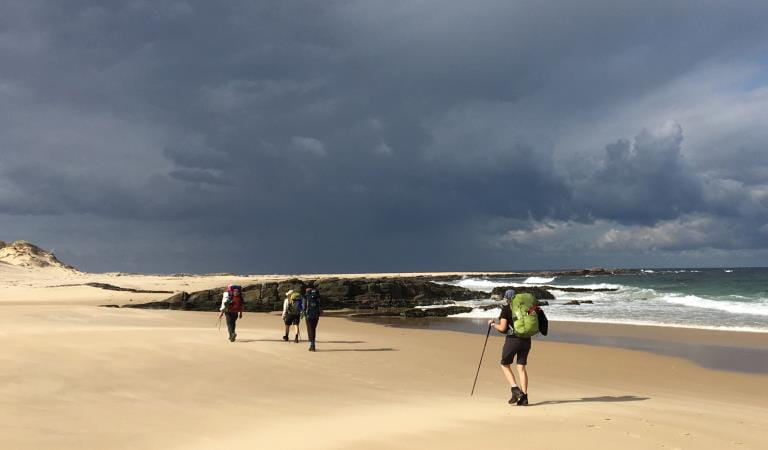
Cape Howe Wilderness Zone
Genoa Peak
Shipwreck Creek
How to get there
Cape Howe and Mallacoota
To access Mallacoota, turn off the Princes Highway at Genoa on to Mallacoota-Genoa Road. Cape Howe is a designated wilderness zone and can only be accessed on foot. For more information on accessing this area contact the Mallacoota Parks Office. Any overnight hikes in the Cape Howe Wilderness needs to be booked via the NSW National Parks Service Merimbula Office.
When you're there
Shipwreck Creek Beach Walk
10mins, 500m one way
Walk to the secluded beach featuring the picturesque Shipwreck Creek surrounded by spectacular rocky outcrops. The walk commences at the Shipwreck Creek Day Visitor Area and concludes at the communal cooking area.
Shipwreck Creek to Centre Track via Old Coast Road
2 hours, 6.5km one way
This walk provides spectacular views as it meanders through heathland along the coast. It also offers an excellent opportunity for bird watching. The track commences at the Day Visitor Area and concludes at a car park on Centre Track.
Shipwreck Creek to Seal Creek
2 hours, 6km return
Follow the creek to the secluded Seal Creek Beach where there are impressive rock pools to explore. The track to Seal Creek is accessed from the south-western side of the beach.
Warning: There are no signposts or track markers and attempts to return via the rocky coastline are not recommended as large waves and high tides may prevent access.
Heathland Walk
30 minutes, 2 km return
The Heathland Walk commences at the Shipwreck Creek Day Visitor Area and concludes at the communal cooking area. During spring and summer there is an amazing variety of wildflowers, some of which are classified as rare or threatened. Keep your eyes open for orchids.
When to go
Flathead, whiting, yellowfin, bream and perch are most likely to bite from late spring to autumn. Throughout winter large schools of Black Bream make their way into the estuary. And tailor, salmon and trevally are also known to bit throughout June, July and August.
Need to know
Cape Howe and Mallacoota
Accessibility
Visiting a park can be more of a challenge for people with disabilities, however in Victoria there are a wide range of facilities to help people of all abilities enjoy our wonderful parks around the state.
Assistance dogs are welcome in Parks Victoria parks and reserves. Entry requirements apply for parks and reserves that are usually dog prohibited, such as national parks.
Change of Conditions
Nature being nature, sometimes conditions can change at short notice. It’s a good idea to check this page ahead of your visit for any updates.
-
Allan Head (Croajingolong National Park)
Allan Head Jetty Closure
The Allan Head Jetty is temporarily closed for public safety. Visitors are advised that the Allan Head picnic area remains open, however access onto the jetty is restricted. -
Goanna Bay (Croajingolong National Park)
Goanna Bay Jetty Closure
The Goanna Bay Jetty is temporarily closed for public safety. Visitors are advised that the Goanna Bay day visitor area remains open, however access onto the jetty is restricted. -
Kingfish Point (Croajingolong National Park)
Kingfish Point Jetty Closure
The Kingfish Point Jetty is closed for public safety. Visitors are advised that the Kingfish Point day visitor area remains open. -
Wingan Inlet Campground (Croajingolong National Park)
Hazard Trees in Wingan Inlet Campground
Heavy rainfall and strong winds have damaged trees in Wingan Inlet Campground.Sites 2, 4, 7, 10, 11 and 12 are now closed due to a large hanger above the camp sites.These areas have been cordoned off with hazard tape. To ensure your safety please do not enter these areas. -
Notices Affecting Multiple Parks
Ground shooting operations targeting deer
Control operations (ground shooting) targeting deer are undertaken in this area. The Park will remain open to visitors during operations.Planned aerial shooting operations targeting deer
Control operations (aerial shooting) targeting deer are planned for this area. During operations parts of the Park will be closed to visitors. More information on closures will be posted a minimum of 4 weeks prior to commencement.Visitors are advised to check the Change of conditions listing prior to arrival for up to date information and maps.For more information about deer control to protect biodiversity, please visit this link. -
Shipwreck Creek Campground (East Gippsland Coastal streams Natural Catchment Area, Croajingolong National Park)
Construction of Toilets 22nd September to 18th October 2025
Notice of WorksFrom 22 September to 18 October 2025, construction works will be taking place at Shipwreck Creek Campground to replace the toilet block. Works will occur between 7:00 am and 5:00 pm daily. The campground will remain open, however visitors should expect some disruptions during this period, including noise, material deliveries, and trade vehicles onsite. Temporary toilet facilities are available for use until the new toilet block is complete. -
Notices Affecting Multiple Sites
Temporary closure of Thurra North Campground and Pt Hicks Road at Bald Hills Tk
From the 20th October to 9th November, the approaches to the Thurra Bridge will be bitumen sealed. This means that access to the Thurra North Camping Area and access to Pt Hicks Rd below Bald Hills Track will be temporarily closed.


